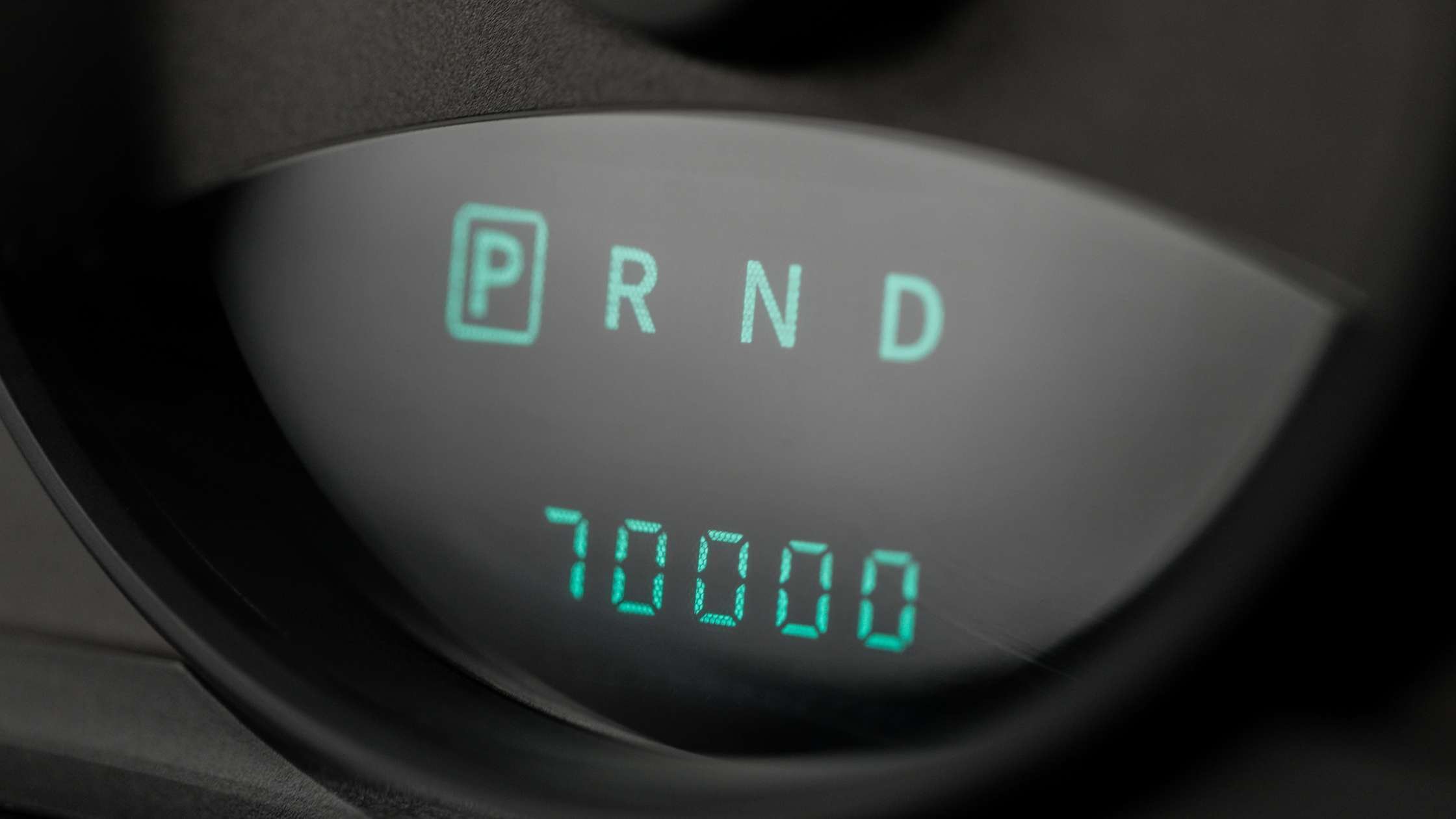
Fuel represents one of the largest expenses for any fleet operation. Without proper monitoring, issues such as fuel theft, fraud, inefficient driving, or overlooked maintenance can escalate expenses even higher. Implementing fuel card odometer tracking addresses these challenges by pairing each fuel purchase with mileage data, giving you a clearer picture of your fleet’s efficiency and performance.
Accurate odometer entries enable you to detect fraudulent activity, pinpoint underperforming vehicles, schedule preventative maintenance, and ensure fleet fuel efficiency. In this article, we’ll explain how odometer tracking works and outline the steps to configure your fuel cards for maximum benefit.
Table of Contents
- How do fuel cards track odometer?
- How to set up your fuel cards to track odometer the right way
- How fuel card odometer data can help you
- Fuel card odometer frequently asked questions
How Do Fuel Cards Track Odometer?
Fuel cards require drivers to enter both a PIN and an odometer reading at the pump before a transaction is approved. They’re able to capture this information because fuel card networks require fuel station merchants to provide Level 3 transaction data. Level 3 is the most detailed payment data available and includes key fleet details like driver name, vehicle description, and odometer readings. By comparison, most credit cards only authorize transactions using Level 1 data, which usually only requires you to enter a zip code.
How to Set Up Your Fuel Cards to Track Odometer the Right Way
Most fuel cards require drivers to enter an odometer reading, but if cards aren’t assigned correctly or drivers enter the wrong numbers, the data won’t be reliable. To make sure odometer tracking actually works for your fleet, follow these steps to set up your fuel card program the right way:
Step 1: Assign Each Fuel Card to a Vehicle
To track odometer data accurately, each vehicle would ideally use the same fuel card. Assigning cards to vehicles is the easiest way to make this happen. Since the card stays with the vehicle, every odometer entry at the pump is tied directly to that unit, keeping readings in order and ensuring MPG reports are accurate, even if multiple drivers share the same vehicle.
Assigning fuel cards to drivers only works when each driver always uses the same vehicle. For instance, companies will assign driver fuel cards to owner-operators since they drive the truck they own every time.
Step 2: Require Drivers to Enter Accurate Odometer Readings
Fuel card systems can’t force drivers to enter the exact odometer reading since that number is always changing. Some cards can flag entries that are too high or too low compared to the last reading, but they still don’t guarantee accuracy. That’s why it’s important to encourage drivers to enter valid information. Here are a few ways to help make sure odometer entries are accurate.
How to Get Drivers to Enter the Correct Odometer
- Create a driver fuel policy with clear instructions on how to enter the odometer, why it's important, and, what the consequences are if bad odometer data is entered.
- Perform regular odometer entry audits by matching recent fuel transactions with actual odometer readings from your vehicles.
- Match fuel card odometer entries with odometer readings from your ELD (electronic logging device) or fleet GPS data since these devices read the actual odometer from the vehicle computer.
Step 3: Know Baseline Vehicle MPG Expectations
Knowing the average, or baseline, MPG for each vehicle is the first step to making meaningful fuel comparisons. You can pull this expected MPG from the vehicle manufacturer, the U.S. Department of Energy’s Fuel Economy Information, or from your own historical data using fuel cards, ELDs, or fleet GPS reports. Setting baselines for every vehicle gives you a clear benchmark to measure against.
Once those baselines are in place, it’s easy to spot problems. If a vehicle’s actual MPG drops significantly below its baseline, it could signal poor driving habits, overdue maintenance, or fraud.
How Fuel Card Odometer Data Can Help You
Below are some ways fleet managers are using fuel card odometer data to help manage their fleet.
Detect Driver Fuel Theft

One of the most valuable uses of odometer tracking is spotting fuel theft and fraud. Fuel cards come with spend controls to stop most misuse, but there’s still a common loophole. A driver can have a friend or family member meet them at the pump, fill the company vehicle, then top off the personal car on the same transaction, making it appear like a normal purchase.
With odometer tracking in place, these schemes are easier to catch. The MPG from that fill up will drop noticeably below normal, signaling that fuel went into more than just the company vehicle. Without odometer data, this kind of theft can slip by undetected.
Spot Fraudulent Transactions
Fuel card fraud can happen when thieves install a skimming device at the pump to steal card info and create a clone. They’ll use that cloned card to buy fuel on your account, and many times it goes unnoticed until a lot of damage is done. The good news is that by watching your odometer entries in your fuel card reports, you can catch this early. Since fraudsters aren’t driving your vehicles, they won’t be able to enter accurate odometer readings.
Identify Inefficient Vehicles
MPG reports make it easy to spot irregularities. A sudden drop in MPG may point to poor driving habits like idling, speeding, or hard acceleration, while consistently low MPG can signal a maintenance issue such as underinflated tires or mechanical problems. Either way, lower than expected fuel efficiency increases operating costs. Tracking MPG through odometer entries helps you catch problems early, address them quickly, and keep expenses in check.
Use Odometer Tracking to Schedule Routine Maintenance
Odometer tracking is also useful for scheduling regular vehicle maintenance. It can be used to indicate when oil changes, new tires, or other general maintenance may be needed. This helps stretch the life of your vehicles and avoid more costly maintenance down the road.
Fuel Card Odometer Frequently Asked Questions
Why Does a Gas Pump Ask for Odometer?
If you’re using a business fuel card, the pump will prompt you for the odometer. This lets the system pair fuel data with mileage so your fleet manager can get accurate reports and insights.
Do Fuel Cards Have a Way of Validating Odometer Entries?
A fuel card cannot enforce an exact odometer entry. However a fuel card can use odometer validation to deny a transaction if it's outside a reasonable range. For example, a fuel card could deny a transaction if the odometer is less than the odometer entry at the last transaction or if it's much greater than the last transaction.
Track Odometer Readings with P-Fleet Fuel Cards
With P-Fleet’s Voyager and CFN fuel cards, odometer readings are automatically captured at every transaction—drivers simply enter the vehicle’s odometer value along with their secure PIN each time they refuel. This process accurately ties mileage data to the vehicle, eliminating the need for manual recordkeeping and ensuring precise tracking of mileage for your entire fleet.
Using our online portal, you can quickly access detailed reports, compare fuel efficiency across different vehicles, and flag concerns such as irregular driving behaviors, maintenance requirements, or unauthorized usage. P-Fleet’s fuel card program offers the transparency needed to track every vehicle mile and optimize decisions to lower operational costs.





